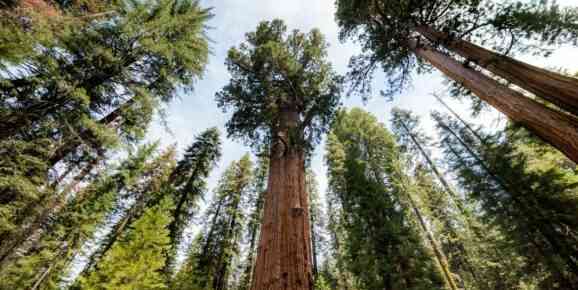Sequoias — ancient trees, real relics of those times when dinosaurs still roamed the planet. They survived only in one corner of the planet, but by the efforts of mankind they began to be planted in other places, where, by the way, these trees took root perfectly. True, they will not grow to impressive sizes soon.
Interesting facts about sequoias
- Once upon a time, sequoias grew throughout the Northern Hemisphere, but today they grow only in North America. They also began to grow in Australia.
- Sequoias are one of the oldest trees, they appeared on Earth more than two hundred million years ago.
- The tallest trees in the world are sequoias (interesting facts about trees).
- Sequoia consumes a huge amount of water, so in nature these trees grow mainly near the coast. They also like fog.
- The tallest sequoia in the world even has its own name – Hyperion. Its height is more than 115 meters, and it would have grown even more if it were not for a hollow made in the top of the tree by some woodpecker.
- All sequoias growing on Earth belong to the same species.
- The oldest sequoias, many of which have long grown more than a hundred meters, are two thousand years old or more.
- Sequoias do not shed their needles, remaining green all year round.
- Their bark is very thick – about 20-30 centimeters for an old tree.
- The volume of a 100-meter sequoia reaches one and a half cubic kilometers.
- If sequoias suddenly appeared in the taiga forests instead of all the trees, the amount of oxygen in the earth’s atmosphere would quickly become incompatible with life.
- Sequoia wood and bark do not burn well due to their high moisture content.
- Due to its brittleness, sequoia wood is not used for construction or furniture production.
- The weight of the old sequoia exceeds two thousand tons.
- At an altitude of more than a kilometer above sea level, sequoias are practically not found, since at such heights the air is already too dry for them (interesting facts about the air).
- Sequoias growing in a climate that is not humid enough for them are usually shorter and thinner than their relatives, which receive enough moisture.
